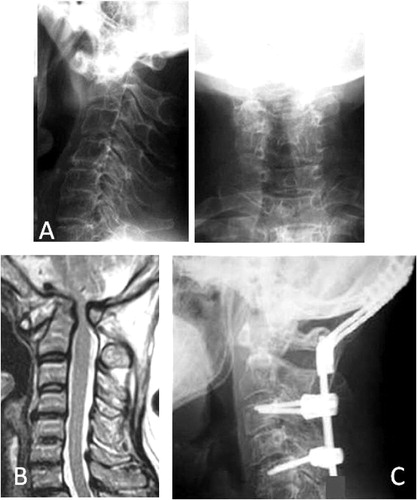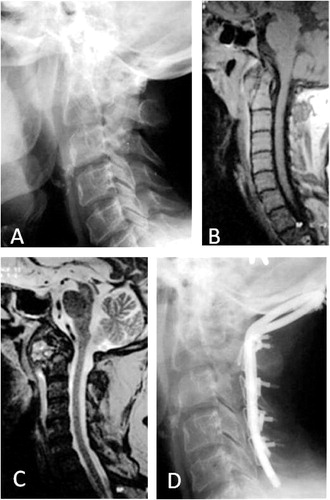Figures & data
Table 1 Frankel classification of 10 patients with occipitocervical instability.
Table 2 Summary data of 10 patients who underwent occiptocervical fixation.
Table 3 Outcome of patients in relation to the etiology and the technique of fixation.


